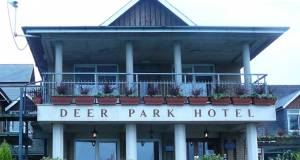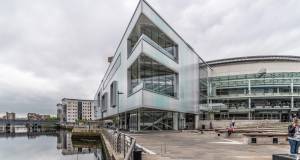- General
- Posted
Timber in construction group holds first meeting
Increasing the use of timber in construction is central to the work of a new steering group appointed by the Minister of State for Land Use and Biodiversity at the Department of Agriculture, Food and the Marine, Senator Pippa Hackett.
This article was originally published in issue 46 of Passive House Plus magazine. Want immediate access to all back issues and exclusive extra content? Click here to subscribe for as little as €15, or click here to receive the next issue free of charge
Speaking after the first meeting of the Interdepartmental and Industry Steering Group on Timber in Construction in November, Minister Hackett said: “We want to see more timber used in construction. Not only is wood a sustainable, homegrown product, but it can also replace steel and concrete, reducing the carbon footprint of our buildings. Timber used in construction is an excellent way of storing and locking up carbon and has a positive impact on our climate. We know our forests bring great benefits for our climate, water quality, nature and biodiversity – growing timber as a product for construction is also central to our climate efforts and to the future of the forest sector.”
The group brings together industry and government departments to assess the needs of the sector and increase timber use in construction. The group is tasked with examining potential obstacles to increasing timber use, including regulatory and standardisation challenges, and to maximising the use of home-grown timber.
The new €1.3 billion Forestry Programme, launched in September, offers grants and yearly premiums for landowners to plant new forests for timber. Applicants can receive grants of €4,452 per hectare, and annual payments of up to €863 per year for 20 years to plant a new diverse conifer forest for timber production with 20 per cent broadleaf species through the new afforestation scheme.
The government is committed to increase the number of timber growers in the state and offers grants to fully establish new forests and support the management of the existing forest estate. The government’s new Forest Strategy places a strong emphasis on the use of timber and its significant role in reducing the amounts of concrete and steel in construction.
Group chair Prof J Owen Lewis said: “I am delighted to see the enthusiasm and commitment of the steering group at today’s meetings. There is a real urgency to increase the use of timber in construction, and I have no doubt that if we work together we can create the conditions for positive change.”
The mission of the group is to develop a forum with government and industry to create the conditions to increase the use of timber in construction whilst ensuring the highest degree of building safety and property protection; to examine regulatory and standardisation standards challenges; and to maximise the use of home-grown timber in construction.
Membership of the group includes Andrew Carpenter, UK Structural Timber Association; David Browne, RIAI; Dermot O’Donnell, ARUP; Des O’Toole, Coillte; Duncan Stewart, Earth Horizon Productions; Hugh O’Connor, Building Materials Federation – IBEC; J Owen Lewis, chair; Pat Barry, Irish Green Building Council; Patrick McGetrick, TERG – University of Galway; Peter de Lacy Staunton, Irish Timber Frame Manufacturers Association; Sarah-Jane Pisciotti, Sisk; Paul Savage, Department of Agriculture, Food and the Marine; Feargal Ó Coigligh, Department of Housing, Local Government and Heritage; Brian Carroll, Department of the Environment, Climate and Communications; Joseph Cummins, Department of Enterprise, Trade and Employment; Ciaran O'Connor, Office of Public Works; and John Brannigan, City and County Managers Association.
Related items
-
 #BuildingLife Series: Director at CORA Consulting Engineers, John Casey
#BuildingLife Series: Director at CORA Consulting Engineers, John Casey -
 Green homes and finance join forces for growth
Green homes and finance join forces for growth -
 Hotel demolition judicial review could set embodied carbon precedent
Hotel demolition judicial review could set embodied carbon precedent -
 ZEB Summit celebrates Irish passive progress
ZEB Summit celebrates Irish passive progress -
 Irish and British associations unite for conference as passive house explodes
Irish and British associations unite for conference as passive house explodes -
 IGBC launches case studies to drive nature-led construction
IGBC launches case studies to drive nature-led construction


